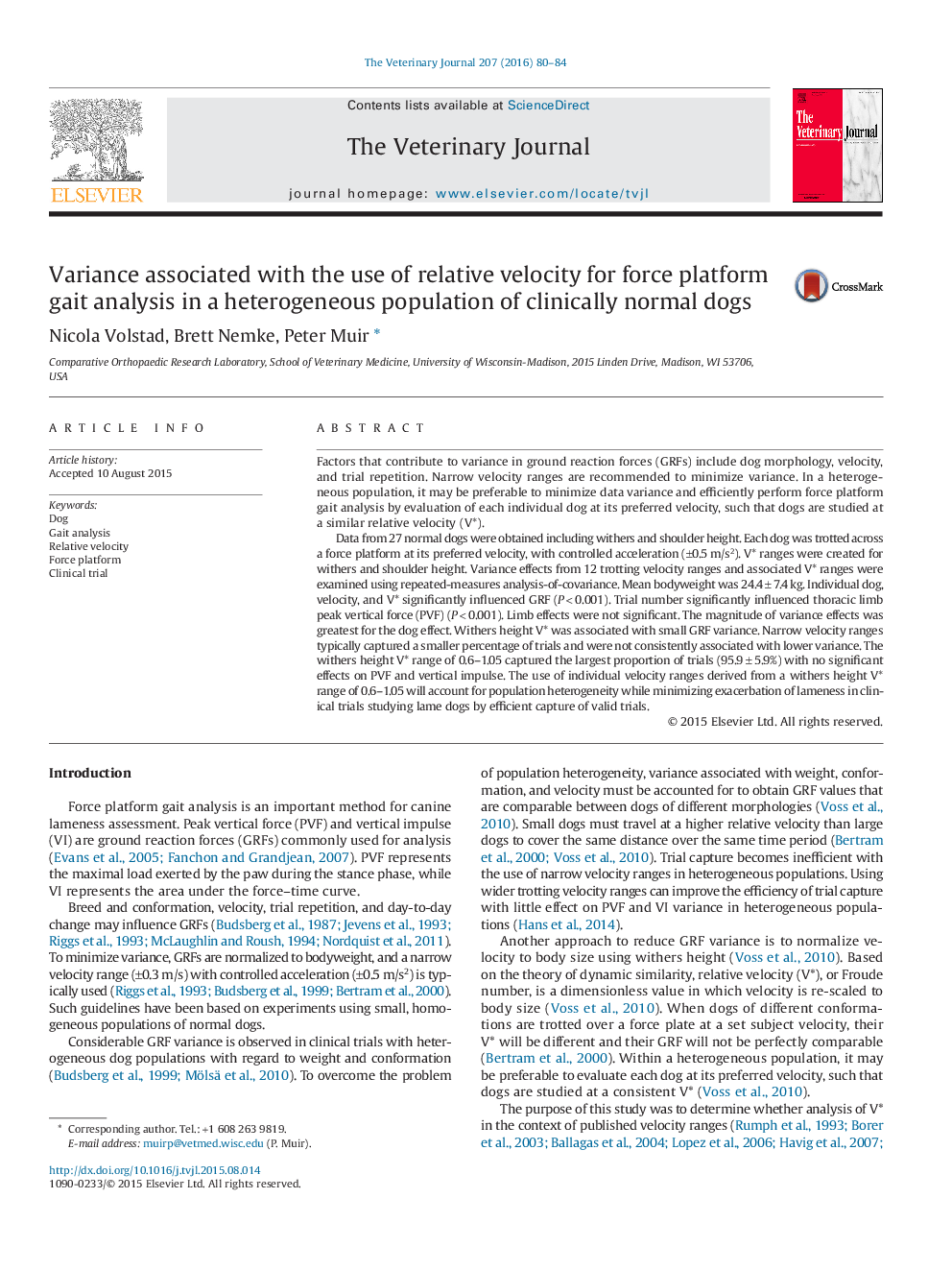| Article ID | Journal | Published Year | Pages | File Type |
|---|---|---|---|---|
| 5797524 | The Veterinary Journal | 2016 | 5 Pages |
â¢Ground reaction force data from 27 clinically normal dogs of different breeds were analyzed.â¢Data were collected with dogs trotting at their preferred velocity.â¢Withers height relative velocity was associated with small ground reaction force variance.â¢Wider velocity ranges facilitate trial capture.â¢Individual velocity ranges derived from withers height relative velocity account for population heterogeneity.
Factors that contribute to variance in ground reaction forces (GRFs) include dog morphology, velocity, and trial repetition. Narrow velocity ranges are recommended to minimize variance. In a heterogeneous population, it may be preferable to minimize data variance and efficiently perform force platform gait analysis by evaluation of each individual dog at its preferred velocity, such that dogs are studied at a similar relative velocity (V*).Data from 27 normal dogs were obtained including withers and shoulder height. Each dog was trotted across a force platform at its preferred velocity, with controlled acceleration (±0.5âm/s2). V* ranges were created for withers and shoulder height. Variance effects from 12 trotting velocity ranges and associated V* ranges were examined using repeated-measures analysis-of-covariance. Mean bodyweight was 24.4â±â7.4âkg. Individual dog, velocity, and V* significantly influenced GRF (Pâ<0.001). Trial number significantly influenced thoracic limb peak vertical force (PVF) (Pâ<0.001). Limb effects were not significant. The magnitude of variance effects was greatest for the dog effect. Withers height V* was associated with small GRF variance. Narrow velocity ranges typically captured a smaller percentage of trials and were not consistently associated with lower variance. The withers height V* range of 0.6-1.05 captured the largest proportion of trials (95.9â±â5.9%) with no significant effects on PVF and vertical impulse. The use of individual velocity ranges derived from a withers height V* range of 0.6-1.05 will account for population heterogeneity while minimizing exacerbation of lameness in clinical trials studying lame dogs by efficient capture of valid trials.
